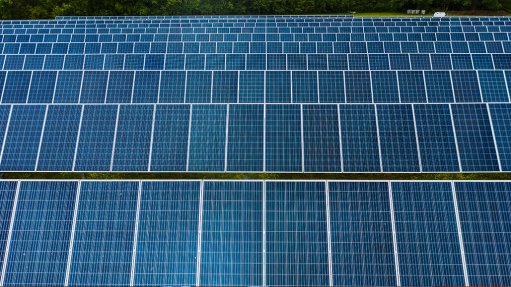
RENEWABLE UPTAKE Scatec’s new project, which falls under the RMIPPPP, includes a 150 MW flagship twin hybrid PV-and-storage site in the Northern Cape
With a background in electrical engineering, “a knack for business, and a passion for sustainability”, Norwegian global renewables company Scatec Southern Africa GM Jan Fourie has specialised in renewable energy projects for over a decade.
Pointing to the devastation in South Africa’s coal belt, specifically in eMalahleni and surrounding areas where 5 000 people perish every year owing to lung disease, and where childhood asthma is rife, Fourie stresses that, “the need for cleaner energy in South Afica is urgent”.
“Nevertheless, the mines and coal-fired power stations are the lifeblood of many communities, and to abandon them would result in a landscape of ghost towns, and a human tragedy of mass unemployment. “I therefore fully support the Department of Minerals Resources and Energy’s (DMRE’s) plan to repurpose these areas, preferably by retro-fitting existing coal-fired plants with renewable energy plants or battery storage solutions, and training people in new skills to ensure that jobs can be transferred,” says Fourie.
He says that the United Nations twenty-sixth Conference of the Parties, or COP26, which took place in Glasgow last year, could herald solutions to some of State-owned power utility Eskom’s woes.
“The Paris Climate Agreement of 2016 acknowledges the duty of developed nations, who are responsible for the bulk of greenhouse gases emitted thus far, to assist developing nations in their efforts to decarbonise and mitigate risks associated with climate change,” says Fourie.
Faced with international pressure to decarbonise, and the local economic imperative to liberalise and allow competition-driven efficiency, Eskom initiated its unbundling process from a vulnerable position.
Saddled with R400-billion in debt, and an ageing coal fleet that is increasingly unable to meet national grid demands, Eskom plans to separate into three divisions for its three primary functions: generation, transmission and distribution, with each entity expected to be allocated a portion of the debt.
There are legitimate concerns around how these entities will raise capital and stay afloat while shouldering such great arrears.
“Our task now is to bridge the gap between a beleaguered parastatal and its progressive vision to achieve carbon-neutrality by 2050. The Integrated Resource Plan 2019 (IRP) outlines South Africa’s stepping stones to reduce coal’s contribution to the energy mix to below 60%, in favour of renewables like wind, and photovoltaic (PV) technologies, which would account for 25% of our energy mix by 2030.”
He speculates that Municipal Energy Resilience (MER) funds, could be rolled out to facilitate municipal generation in other provinces.
“Although it’s a relatively small fund – only for preparatory work – by focusing on getting independent power producers up-and-running, MER funds are giving the Western Cape energy sector a notable boost.”
The DMRE’s Renewable Energy Independent Power Producer Procurement Programme (REIPPPP) also heralds strong prospects for the renewable energy industry, and job creation in 2022.
“REIPPPP projects have already created 40 000 jobs in South Africa, spread over about 100 sites procured by the IPP Office during the first five rounds of IPP bidding.
”
He adds that, with Bid Window 6 planned for 2022, and Bid Window 7 to follow in late 2022 or early 2023, many new jobs look set to be created at solar and wind plants, especially in the nation’s three Cape provinces, where the bulk of South Africa’s renewable energy is produced.
Fourie is one of the executives at the helm of Scatec’s ambitious new projects that fall under the country’s Risk Mitigation Independent Power Producer Procurement Programme, which includes a 150 MW flagship twin hybrid PV-and-storage site in the Northern Cape. Sporting two-million individual solar panels, and an initial capital expenditure of around $1-billion, the plant will be one of the biggest hybrid plants of its kind in the world.
“New policy amendments have been announced that exempt IPPs with up to 100 MW output capacity from previously onerous licensing conditions overseen by the National Regulator of South Africa (Nersa). “This relaxing of red-tape, in conjunction with REIPPPP bidding coming up again soon, and the fact that renewables are now the most competitive generation source, present an exciting landscape for renewables in 2022 and beyond,” he says.
“Government collaboration with the private sector and international stakeholders, who possess the capital and expertise to unlock the rich potential offered by renewables in South Africa, is imperative.
“Players are cautiously optimistic that this year could herald an accelerated drive towards the just, inclusive energy transition enshrined in our IRP, in which all South Africans will be the beneficiaries of a cleaner, brighter future,” concludes Fourie.